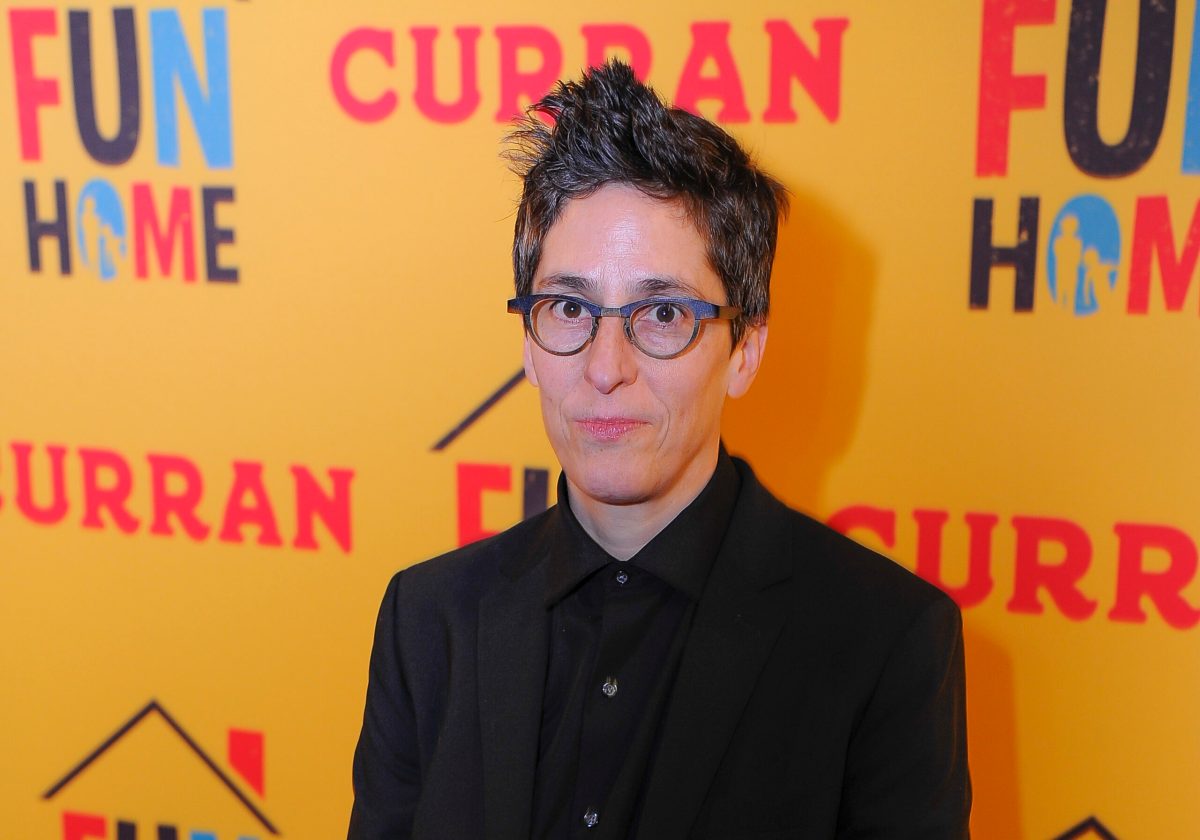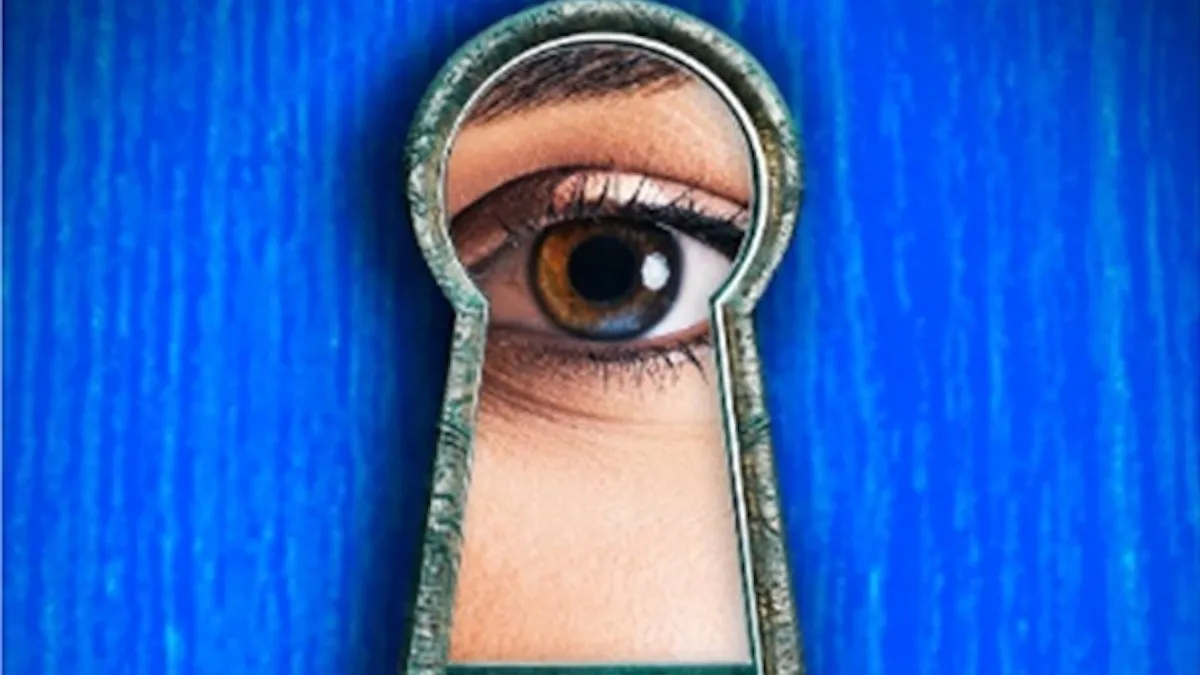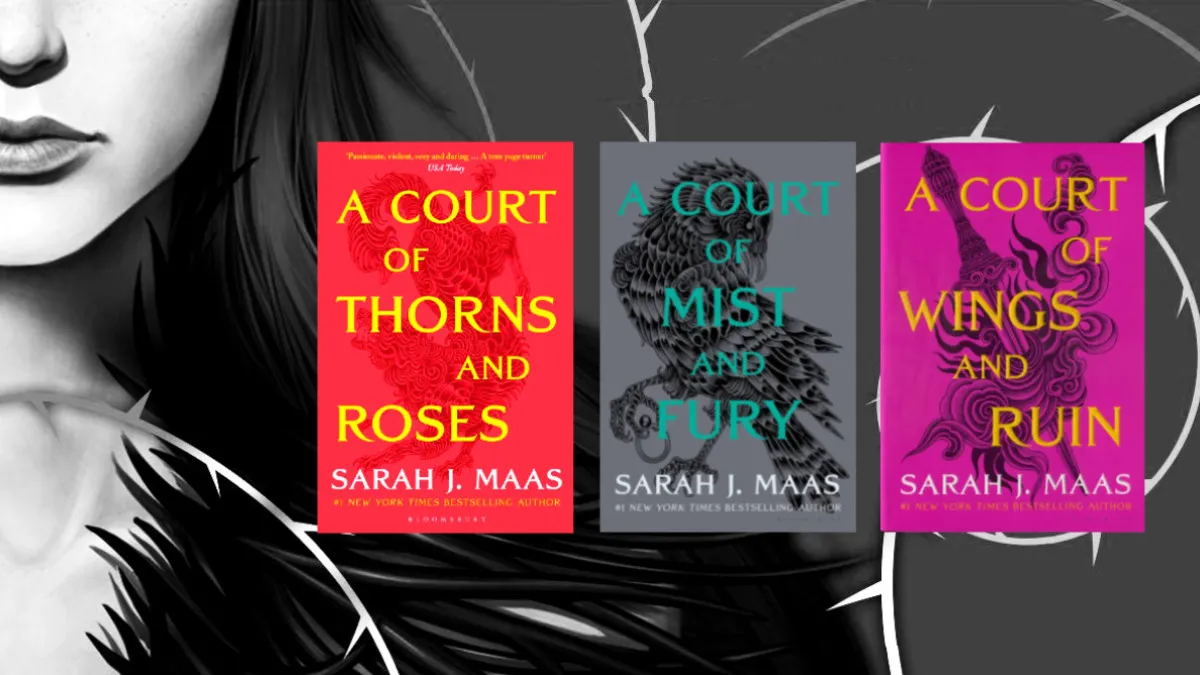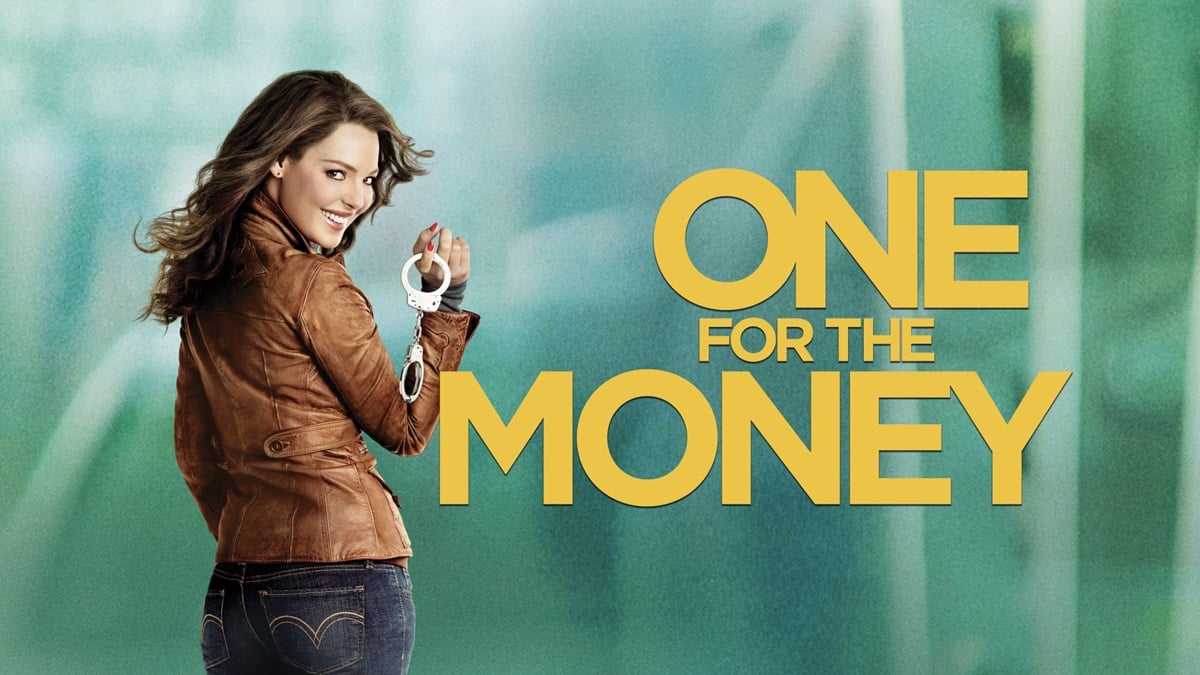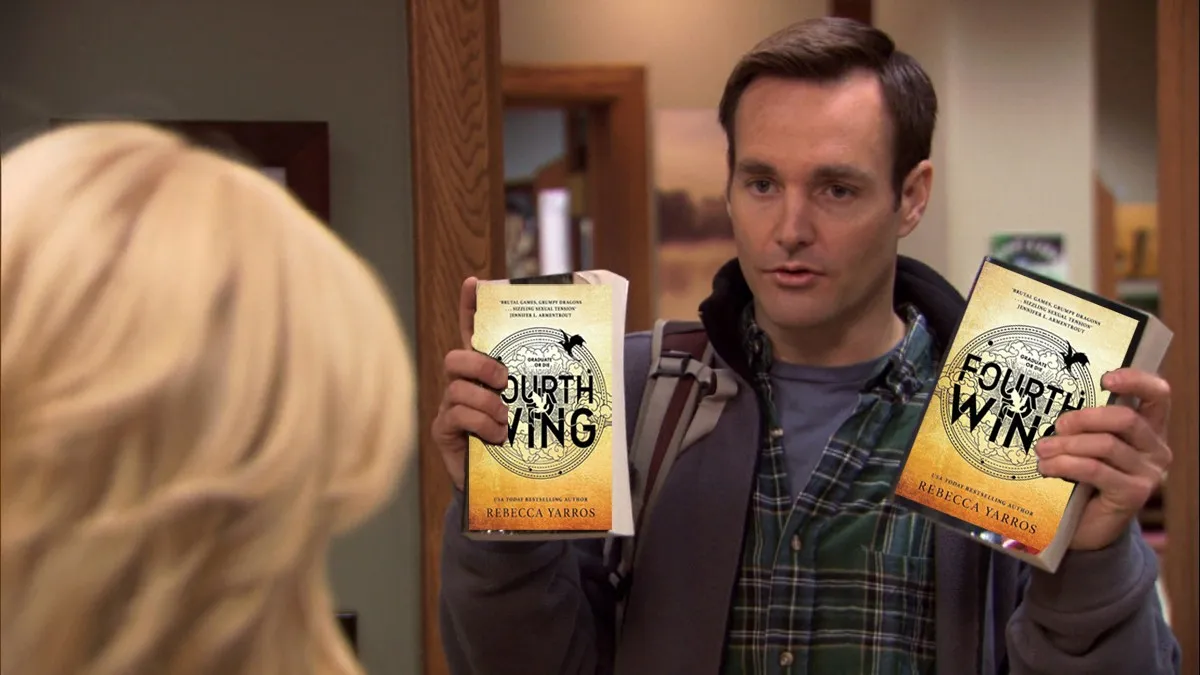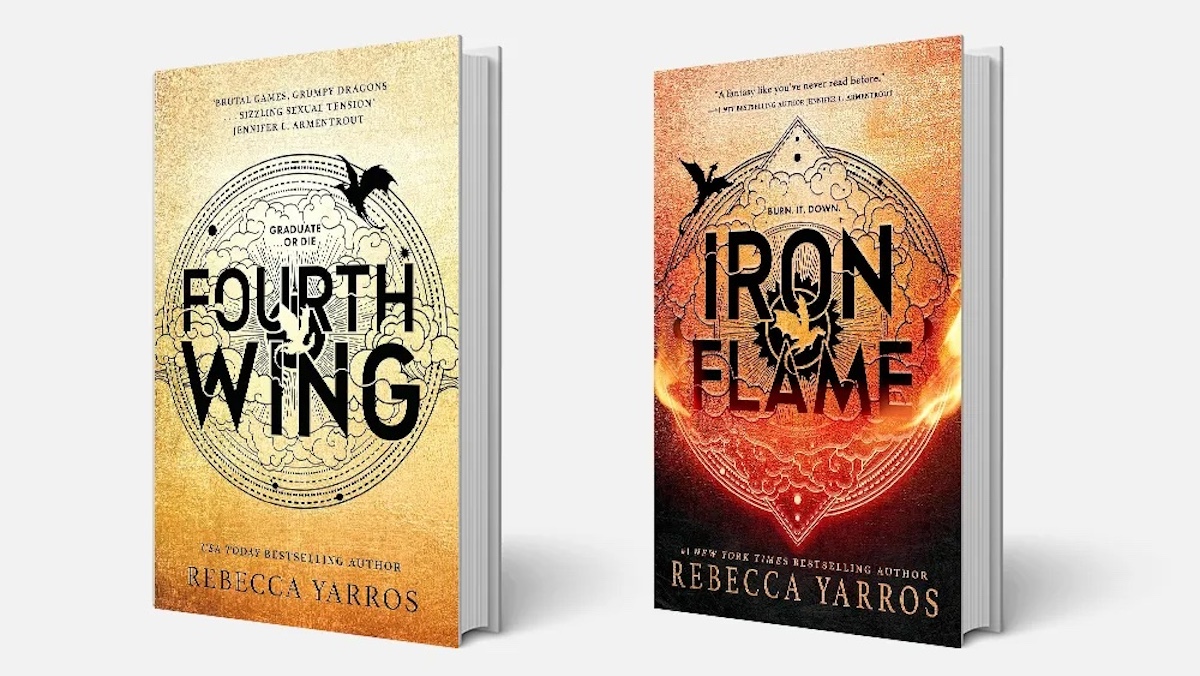By now, you’ve probably heard of the “Bechdel Test,” which has now been renamed to the Bechdel-Wallace Test. Whether you’ve read one of our articles about whether or not a piece of media passes it, or you had to look it up after it got referenced in Rick and Morty, Alison Bechdel’s accidental creation is now seemingly everywhere.
But who is Bechdel, and how did this test come to be? There’s quite a history behind her, which, as a longtime fan, I’m excited to share with all of you. Here’s everything you need to know about the cartoonist legend Alison Bechdel, and the origins of her eponymous test.
“Fun Home”
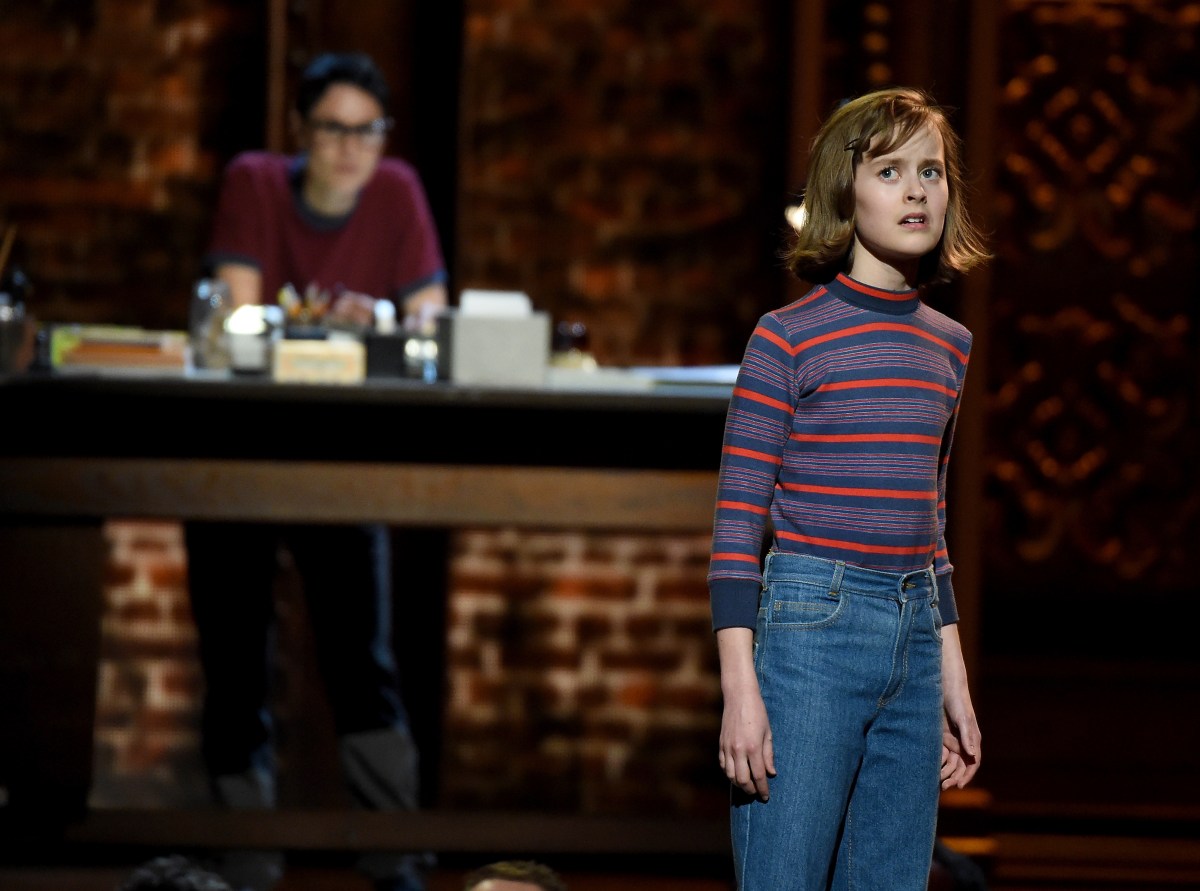
Bechdel was born in Beach Creek, Pennsylvania, in 1960, where she grew up in a home that, according to her work, ran almost entirely on the fumes of neurosis. Her relationship with her father, in particular, was a complex one, which is fully explored in her “family tragicomic” Fun Home (a fantastic read).
From a young age, Bechdel had artistic sensibilities that her parents were happy to nurture, provided she also dabble in athletics. She left high school early to attend the mixed-education program at Bard College at Simon Rock, where she got her AA. From there on, she continued her education at Oberlin College, where she not only graduated with a degree in studio arts and art history: she also finally got a chance to explore her lesbianism in a fully open way.
Inspired and revitalized, she graduated and tried to continue her education further at several art schools, but was rejected from all of them. Ultimately, we can consider this a good thing, as it lead her to get involved in publishing, which put her in the path of those who suggested she try comics.
“Dykes to Watch Out For”: Origins of the Test
The first iteration of Bechdel’s flagship work, the running serial Dykes to Watch Out For, was just a one-off panel she drew at work. But after the comic found a home at feminist newspaper WomaNews, it became a cemented project, lasting from 1983 to 2006.
The comic took place in St. Paul, Minnesota, and largely followed the trials and tribulations of Mo: a frazzled lesbian who seemed to be largely a self-insert for Bechdel. The cast also rotated between various other recurring characters, including the drag king Lois, stressed mom + lawyer Clarice, and “bisexual lesbian” Sparrow. It’s a really fun, if at times overly quirky, group of characters who are easy to see yourself in, whether you’re a lesbian through and through, or you’re a bisexual who’s afraid of women (like me! Yay!).
The cast navigates a plethora of joys and pains, from the frustrations of sapphic dating, to the scary first forays of parenthood, to even the niche exhaustion that comes with highly-communicative co-living spaces. It’s a great read, but of course, its heart lies in its feminist intent.
Mo is a mouthpiece for Bechdel, angrily lamenting all the things that are wrong with the world. But her other characters step in, too, including a pair walking out of a movie theater who determine how to know whether a movie is for them. A.K.A., the very first example of “The Bechdel Test” in action:
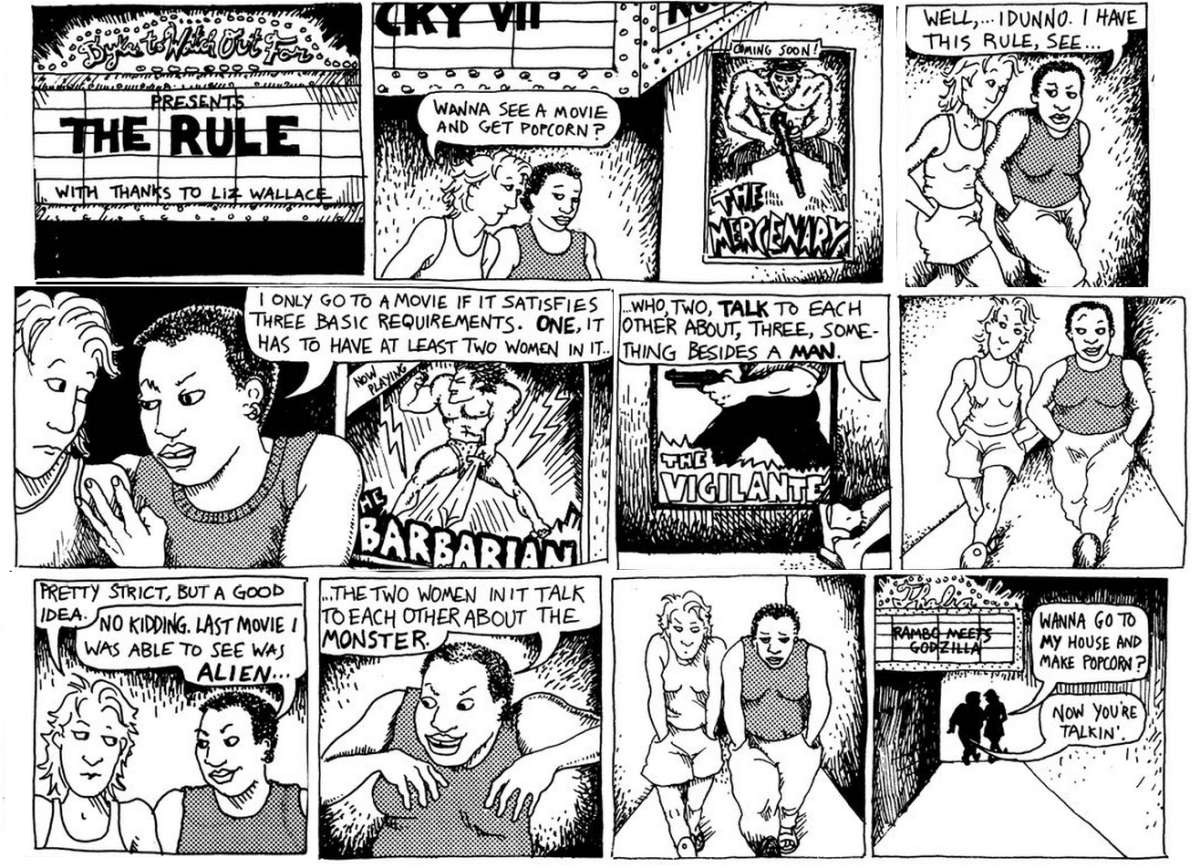
In case you don’t want to read the bubble text, and you still don’t quite know what the test is, it goes like this:
- There must be two named women in a movie.
- They have to talk to each other.
- The conversation subject has to be, at least once, something unrelated to men.
Sometimes it takes a couple of trans-inclusive lesbians to definitively point out the things women should be looking for.
Why the Test Matters
I’m sure there were (and are) plenty of men who make fun of a concept like the test, because it fits in with the idea of the “feminazi”: she who seeks to ruin their good fun, etc. etc. But considering men aren’t the Earth’s only demographic, the world is a big place, and it’d be annoying for them to constantly be inundated with movies about women, for women, where the only men are unnamed, above six foot, packing at least 6 inches, and do nothing but talk about the women in their lives…
Well, it’s only common sense that the Bechdel-Wallace Test should be a thing, right?
Especially back in the 80s and 90s, women in blockbuster movies were mostly just props to carry along the leading man’s motivations. It’s frustrating enough for your average Lisa Simpson to deal with, but it was even worse for queer women, who just wanted to go sit in a cool theater and not be made even more aware of societally accepted rituals of male ogling.
Such poor depictions of women in film also lead towards antagonism for women, giving the assumption that we really are just vapid, nameless airbags who only care about men. I know I certainly grew up being told this was the case, and only seeing such depictions of women on the big screen, I had no cause to believe otherwise.
But here’s the crazy thing, that apparently we needed Alison Bechdel to tell us since we couldn’t figure it out ourselves: women of all shapes, sizes, and origins talk to each other about all kinds of things. AND, it’s not a crime to show us talking about these things on-screen. You want better women in movies? You don’t have to break your back, chief, you just gotta let women be themselves.
And look, yes, sometimes men do dominate the conversation between two women. But I guarantee you, it’s almost never like in major movies where Woman 1 will be like, “Wow, Guy is such a cool guy,” and Woman 2 will be like, “I knowwww, aw I’m so sad he’s dating YOU instead of ME.”
Most of the time, in my experience, it goes like this:
Woman 1: “And then he said THIS.”
Woman 2: “He said THAT?!”
Woman 1: “He said THAT.”
Woman 2: “I hate him!! I hope he pees his pants!!!”
Yep, we all hope you pee your pants, fellas. We’re FEMINIST MONSTERS.
Why do you think people considered Sex and the City to be so revolutionary at the time? It featured four women—FOUR women, the gall!—who mostly talked to each other. Yes, they talked about men a lot, but there was a balance: they talked about everything! They talked about sex, as well as the city, they talked about food, exercise, pools, the weather, they talked about adult braces and new moms, they talked about it all. And the men in the show? They were mostly rotating side-pieces. Love it. #SteveSupremacy
The truth is, as long as there’s such gross inequality between the sexes, which extends to gender identities as well, then there’s a need for a test like this, because the inequality is reflected in art. Men made movies the way they made them because they never had to learn to empathize with women, whereas women were always expected to empathize with men. The Bechdel-Wallace Test is a simple, easily-implemented tool to use in order to mitigate this, not as a point of shame, but as a reference.
A reminder that women will watch your movies, too, so why be a creep about it?
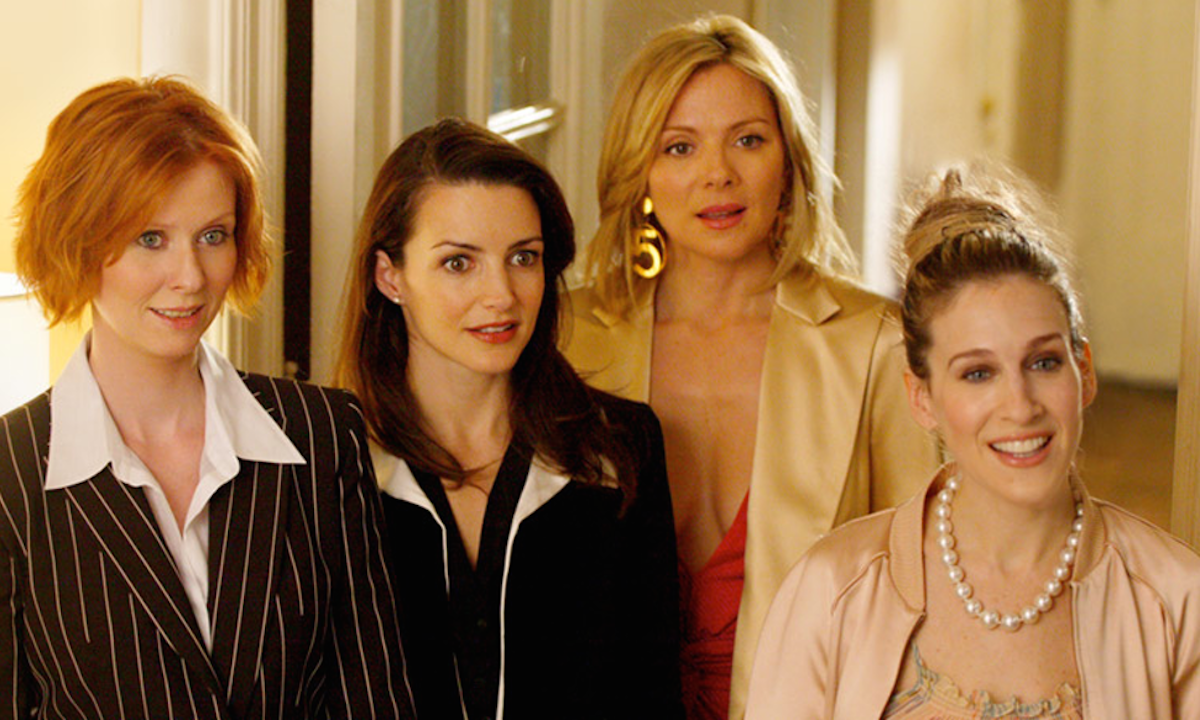
Bechdel’s Other Legacies
To cap it off, I really do implore anyone with an interest in comics to give her work a try. Bechdel is one of the most thoughtful voices in modern comics, and even as the times change with the overall LGBTQ+ community, she’s always been a really steady and accommodating role model to count on.
Dykes to Watch Out For is, of course, an incredibly fun read, as already stated. You can get the full(ish) collection at any major bookstore that has a graphic novel section.
But Fun Home is also an engrossing read, if a bit tragic. It takes on a fairly serious tone, so much so that it was required reading the summer before my freshman year at UC Santa Cruz. It was that, and Ta Nahisi-Coates’ Between the World and Me, just to give you an idea of how grounding the subject matter is.
Fun Home was also made into a broadway play that won numerous awards, and now Jake Gyllenhaal wants to adapt it into a movie (with him playing as her father). Not sure how I feel about that, but hey, if she signed off on it, she must know what she’s doing!
Her other graphic memoir, Are You My Mother?, is just as engrossing, albeit more contemporary and less contemplative. It’s meant to be a companion piece to Fun Home, so I recommend reading them together.
Lastly, if you’re thinking, “Ohhh, I’m not gay, I’m not a woman, I’m not xyz, I don’t know if I’d enjoy this,” I’ll leave you with an anecdote: one of my very first college friends read Fun Home and LOVED it. He was the straightest computer science major I had ever, ever met. He wore the same outfit every day and stayed up all night playing League of Legends and smoking weed. And he loved it.
If he can, I’m sure you can, too.
(featured image: Steve Jennings/Getty Images)



